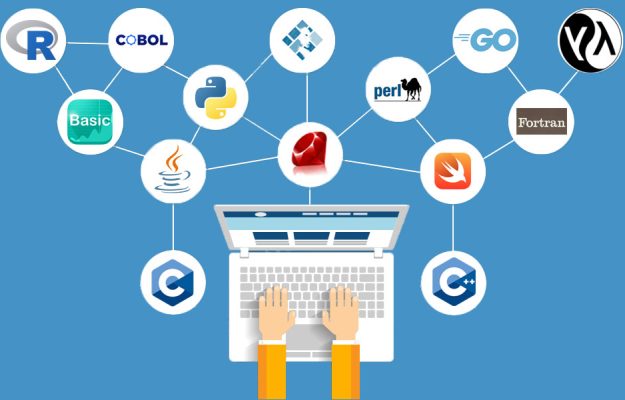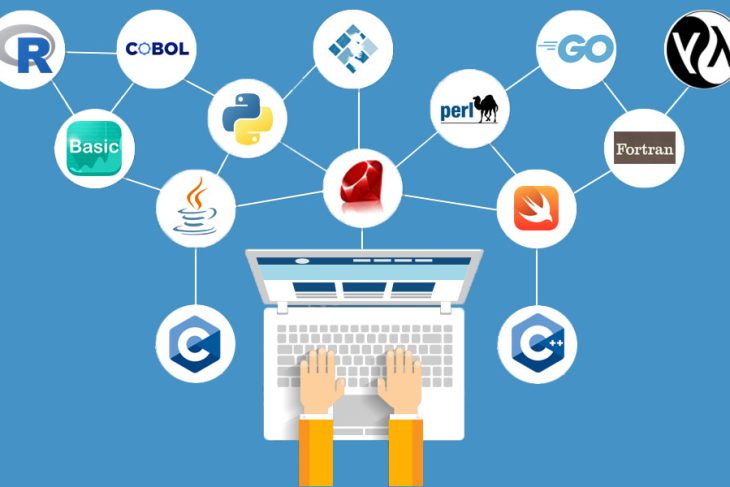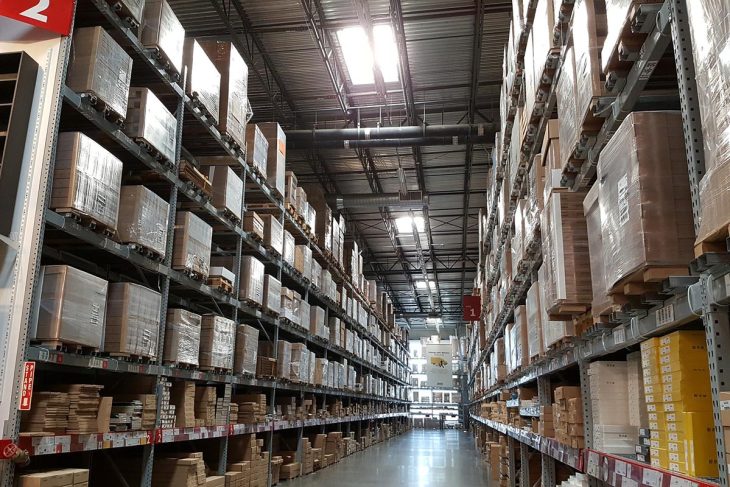
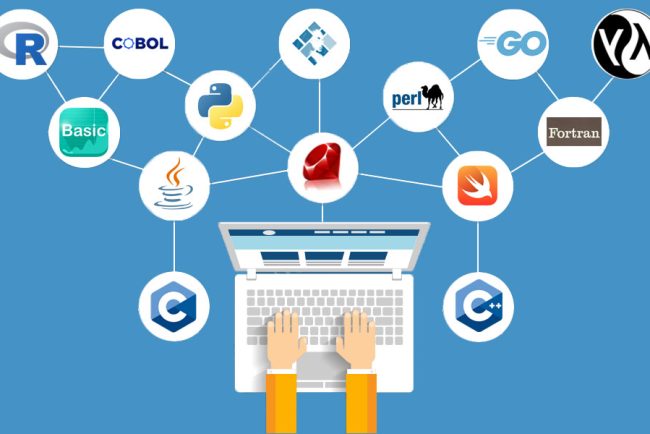
by admin
Exploring the Applications of Natural Language Processing (NLP) in Various Fields
As an Internet information blogger, I am fascinated by the potential of Natural Language Processing (NLP) and its impact on our daily lives. NLP is a technology that allows machines to understand and process human language, combining elements of linguistics, computer science, and artificial intelligence. […]
Industrial
by admin
The Transformation of Travel: Exploring the Impact of Connected Technology
In today’s digital age, connected technology is revolutionizing the way we travel. From planning our trips to navigating unfamiliar destinations, technology has become an integral part of our travel experiences. Let’s delve into how connected tech is changing the landscape of travel and enhancing our […]
Lifestyle
by admin
Building a Future-Ready Warehouse: Nurturing Connectivity and Automation
The concept of the warehouse of tomorrow represents a visionary approach to warehousing and distribution. It envisions warehouses designed with connectivity and automation at their core, promising enhanced efficiency and productivity in storage and fulfillment processes. To achieve this, companies need to focus on modernization […]
Industrial
by admin
Achieving Work-Life Balance in a Startup: 5 Strategies for Success
Working at a startup can be an exhilarating experience, but it often comes with long hours, high pressure, and a fast-paced environment. Finding a balance between work and personal life becomes crucial to avoid burnout and maintain overall well-being. In this article, we will explore […]

by admin
Exploring the Applications of Natural Language Processing (NLP) in Various Fields
As an Internet information blogger, I am fascinated by the potential of Natural Language Processing (NLP) and its impact on our daily lives. NLP is a technology that allows machines to understand and process human language, combining elements of linguistics, computer science, and artificial intelligence. […]
Industrial
by admin
The Transformation of Travel: Exploring the Impact of Connected Technology
In today’s digital age, connected technology is revolutionizing the way we travel. From planning our trips to navigating unfamiliar destinations, technology has become an integral part of our travel experiences. Let’s delve into how connected tech is changing the landscape of travel and enhancing our […]
Lifestyle
by admin
Exploring the Applications of Natural Language Processing (NLP) in Various Fields
As an Internet information blogger, I am fascinated by the potential of Natural Language Processing (NLP) and its impact on our daily lives. NLP is a technology that allows machines to understand and process human language, combining elements of linguistics, computer science, and artificial intelligence. […]
Industrial
by admin
The Transformation of Travel: Exploring the Impact of Connected Technology
In today’s digital age, connected technology is revolutionizing the way we travel. From planning our trips to navigating unfamiliar destinations, technology has become an integral part of our travel experiences. Let’s delve into how connected tech is changing the landscape of travel and enhancing our […]
Lifestyle
by admin
Building a Future-Ready Warehouse: Nurturing Connectivity and Automation
The concept of the warehouse of tomorrow represents a visionary approach to warehousing and distribution. It envisions warehouses designed with connectivity and automation at their core, promising enhanced efficiency and productivity in storage and fulfillment processes. To achieve this, companies need to focus on modernization […]
Industrial
by admin
Achieving Work-Life Balance in a Startup: 5 Strategies for Success
Working at a startup can be an exhilarating experience, but it often comes with long hours, high pressure, and a fast-paced environment. Finding a balance between work and personal life becomes crucial to avoid burnout and maintain overall well-being. In this article, we will explore […]
Startups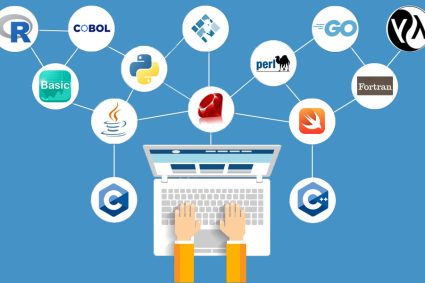
Exploring the Applications of Natural Language Processing (NLP) in Various Fields
by admin
As an Internet information blogger, I am fascinated by the potential of Natural Language Processing (NLP) and its impact on our daily lives. NLP is a technology that allows machines to understand and process human language, combining elements of linguistics, computer science, and artificial intelligence. […]
Industrial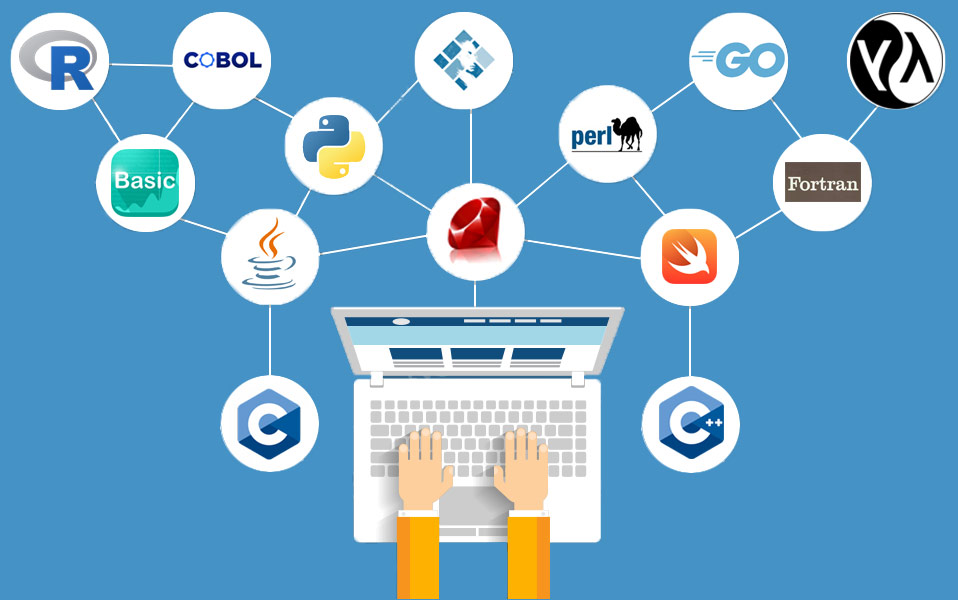
As an Internet information blogger, I am fascinated by the potential of Natural Language Processing (NLP) and its impact on our daily lives. NLP is a technology that allows machines to understand and process human language, combining elements of linguistics, computer science, and artificial intelligence. With its ability to comprehend syntax, semantics, and context, NLP has transformed the way computers recognize speech, interpret written text, and facilitate language translation.
NLP has gained significant traction with the advancements in deep learning, machine learning, and data labeling techniques. By analyzing vast datasets, NLP algorithms can uncover patterns in text and extract meaningful information. This enables computers to automatically process large volumes of data, including emails, texts, and social media posts.
Beyond generating natural language text, NLP can also produce structured text for various purposes. Through algorithmic techniques, it can generate text with the same meaning as the input, making it valuable for writing summaries and crafting responses to customer inquiries.
NLP has found utility across a wide range of applications in different industries. For instance, automated chatbots powered by NLP enhance customer experiences by providing personalized and context-aware responses. NLP-based text classification enables the categorization of text data based on topics, sentiments, and intent, facilitating tasks like document classification, spam filtering, and topic extraction. Machine translation systems leverage NLP to analyze source texts, identify meaning, and generate accurate translations in the target language. Named Entity Recognition (NER) in NLP allows for the identification and classification of entities within texts, such as people, organizations, and places, which is crucial for various applications including question-answering and text summarization. NLP also enables Natural Language Generation (NLG), which involves generating human-readable text from structured data, aiding in the automated production of documents. Additionally, sentiment analysis using NLP helps in analyzing emotions expressed in text, allowing businesses to gauge public opinion and measure the popularity of topics or events.
The potential use cases of NLP are vast and extend to industries such as healthcare, education, finance, and marketing. By accurately identifying and processing large amounts of data, NLP enables machines to develop more sophisticated and advanced applications of artificial intelligence. It enhances the interaction between machines and humans, providing a deeper understanding of human thoughts and facilitating effective communication.
In summary, NLP is revolutionizing the way machines comprehend and interpret human language. Its applications span from automated chatbots and text classification to machine translation, sentiment analysis, and speech recognition. As an internet information blogger, I believe that NLP will continue to play a significant role in AI technology, transforming our retail experience, cities, and skies.

by admin
The Transformation of Travel: Exploring the Impact of Connected Technology
In today’s digital age, connected technology is revolutionizing the way we travel. From planning our trips to navigating unfamiliar destinations, technology has become an integral part of our travel experiences. Let’s delve into how connected tech is changing the landscape of travel and enhancing our […]
Lifestyle
In today’s digital age, connected technology is revolutionizing the way we travel. From planning our trips to navigating unfamiliar destinations, technology has become an integral part of our travel experiences. Let’s delve into how connected tech is changing the landscape of travel and enhancing our journeys.
- Seamless Travel Planning: Gone are the days of flipping through travel guides and relying solely on travel agents. With connected technology, travelers have access to a wealth of information at their fingertips. From online travel platforms to mobile apps, planning a trip has become more convenient and efficient. Travelers can research destinations, compare prices, book flights and accommodations, and even customize itineraries according to their preferences.
- Enhanced Communication: Communication barriers are rapidly diminishing thanks to connected technology. Language translation apps, voice assistants, and real-time language translation devices make it easier for travelers to communicate with locals and navigate foreign languages. This fosters a deeper connection with the local culture and enhances the overall travel experience.
- Smarter Accommodations: Connected technology has transformed the way we experience accommodations. Smart hotels equipped with automated check-in systems, keyless entry, and personalized room controls offer convenience and a more personalized stay. Additionally, home-sharing platforms provide travelers with unique and affordable accommodation options, giving them a chance to experience destinations like a local.
- Digital Travel Guides: Traditional travel guides have evolved into digital companions. Mobile apps and websites offer interactive maps, real-time recommendations, and user-generated reviews to help travelers discover hidden gems and plan their activities accordingly. These digital travel guides provide valuable insights and allow travelers to explore destinations at their own pace.
- Seamless Transportation: Connected technology has greatly improved transportation options for travelers. Ride-hailing services and navigation apps simplify getting around unfamiliar cities. Additionally, public transportation systems are incorporating contactless payment methods and real-time updates, making commuting more convenient and efficient.
- Personalized Experiences: Connected tech enables personalized travel experiences. Artificial intelligence algorithms analyze user preferences and behavior to offer tailored recommendations for accommodations, attractions, and dining options. This customization allows travelers to create unique itineraries aligned with their interests and preferences.
- Safety and Security: Connected technology plays a crucial role in ensuring travelers’ safety. Travelers can stay informed about potential risks and emergencies through travel advisories and alerts delivered to their mobile devices. Additionally, wearable devices and smart locks provide added security and peace of mind during their journeys.
As connected technology continues to advance, it holds the potential to reshape the travel industry even further. However, it’s essential to strike a balance between technology and human interaction, ensuring that travelers still embrace the authenticity and spontaneity of travel experiences.

by admin
Building a Future-Ready Warehouse: Nurturing Connectivity and Automation
The concept of the warehouse of tomorrow represents a visionary approach to warehousing and distribution. It envisions warehouses designed with connectivity and automation at their core, promising enhanced efficiency and productivity in storage and fulfillment processes. To achieve this, companies need to focus on modernization […]
Industrial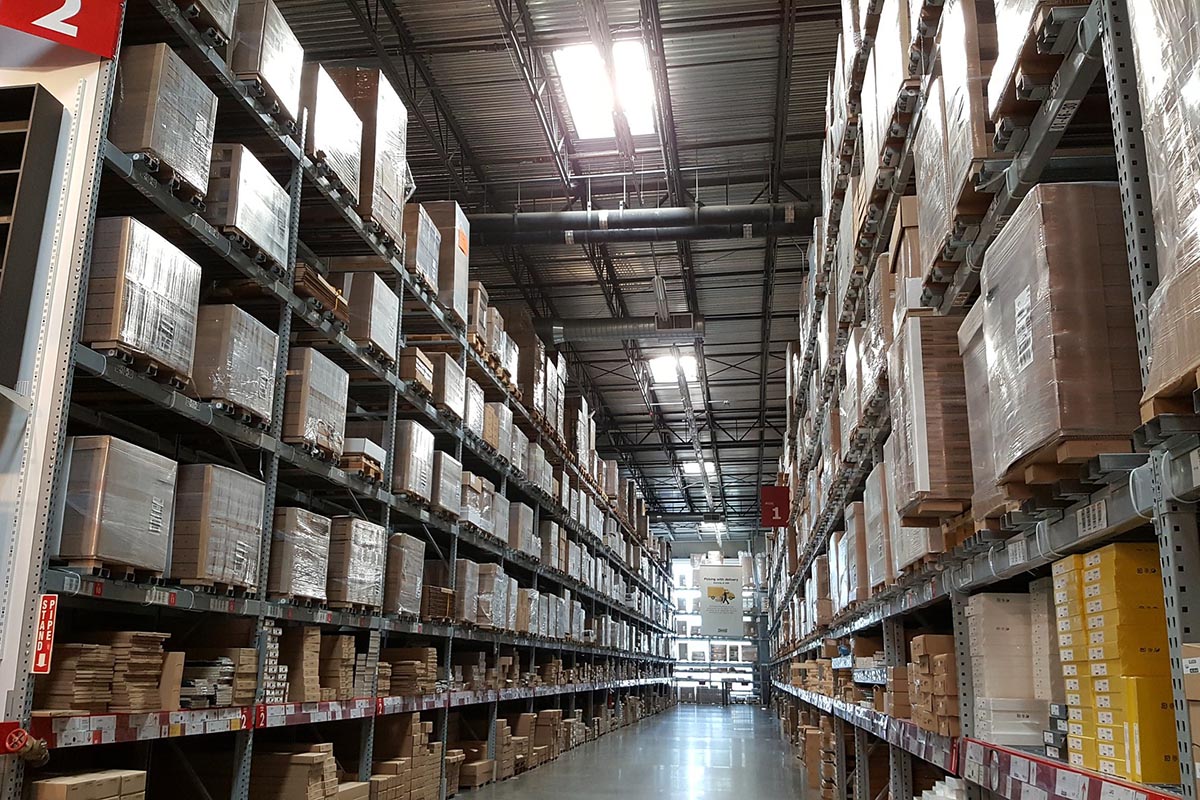
The concept of the warehouse of tomorrow represents a visionary approach to warehousing and distribution. It envisions warehouses designed with connectivity and automation at their core, promising enhanced efficiency and productivity in storage and fulfillment processes. To achieve this, companies need to focus on modernization efforts that integrate technology seamlessly into their operations. This article will explore the key principles for constructing a future-ready warehouse and highlight the significance of connectivity and automation in driving success.
Defining Your ‘Tomorrow’
When discussing the warehouse of tomorrow, it refers to a forward-looking perspective on warehousing and distribution practices. The emphasis is on designing warehouses that embrace connectivity and automation to optimize efficiency and productivity. The aim is to future-proof operations and leverage advanced technologies to streamline processes, improve forecasting accuracy, ensure order precision, and adapt swiftly to evolving market dynamics.
The 7 Rules for Constructing a Future-Ready Warehouse
- Flexibility First: The warehouse of tomorrow should prioritize flexibility, enabling easy reconfiguration and adaptability to meet changing business needs. It involves future-proofing operations to accommodate new technologies seamlessly. Embracing IoT devices and platforms based on common standards, supporting EDIs and APIs, and ensuring fast connectivity throughout the warehouse are essential steps. Modular designs in racking and layout facilitate quick adjustments to accommodate new products or operational changes.
- Automation Has a Heart: Automation and machine learning technologies should be integrated throughout the warehouse, particularly in inventory management, order fulfillment, and tracking services. While automation enhances efficiency, it should complement human workers rather than replace them. The goal is to optimize business outcomes and improve workers’ jobs by implementing automation where it adds value and utilizing human expertise for tasks requiring discretion or complex decision-making.
- Analytics Are the Brains: Data and analytics play a crucial role in every aspect of the warehouse, from inventory management to demand forecasting and planning. Leveraging a smart warehouse management system (WMS) empowered with analytics enables efficient monitoring of inbound goods, current stock, orders, and historical trends. By using data-driven insights, the WMS can make informed decisions about labor allocation, storage locations, order picking, and carrier scheduling, leading to optimized inventory balancing across multiple warehouses.
- Efficiency Includes Energy: Sustainability and energy efficiency should be prioritized in the warehouse of tomorrow. Tracking renewable energy sources and usage across the supply chain is crucial. Implementing advanced sensors and data capabilities allows monitoring and reporting of electricity usage, aligning with the company’s commitment to eco-friendly practices. Warehouses serve as ideal testing grounds for various sustainable initiatives, and their central role in supply chain operations facilitates comprehensive reporting of environmental data.
- Ergonomics Must Evolve: Ensuring worker safety and well-being is paramount in the warehouse of tomorrow. Ample space for movement, ergonomic designs, and the utilization of modern technology can prevent injuries and enhance worker comfort. Attention should be given to immediate ergonomics, allowing robotics and other tools to adapt to how they are used and support workers’ physical demands. Height-adjustable bins, lifting aids, and automated racking systems are examples of technologies that minimize strain and enhance ergonomics.
- Enshrine the Importance of Customer Communication: Collaboration and communication within the warehouse should be prioritized, facilitating seamless coordination among teams and departments. The focus should be on providing efficient and accurate order fulfillment, ensuring a high level of customer satisfaction. Automated updates on shipping status, including reasons for delays, should be integrated with marketing and customer care services, offering transparent and timely information to customers.
- Make Room for Tomorrow’s Tomorrow: Scalability should be built into the warehouse’s design, enabling easy expansion as the business grows. Modular construction approaches can facilitate seamless physical expansion when needed. Forward-thinking companies should invest in additional space ahead of reaching full capacity, anticipating future growth. Furthermore, warehouses should be adaptable to support multiple business models, creating revenue opportunities and enabling flexibility to navigate market fluctuations.

by admin
Achieving Work-Life Balance in a Startup: 5 Strategies for Success
Working at a startup can be an exhilarating experience, but it often comes with long hours, high pressure, and a fast-paced environment. Finding a balance between work and personal life becomes crucial to avoid burnout and maintain overall well-being. In this article, we will explore […]
Startups
Working at a startup can be an exhilarating experience, but it often comes with long hours, high pressure, and a fast-paced environment. Finding a balance between work and personal life becomes crucial to avoid burnout and maintain overall well-being. In this article, we will explore five effective strategies that can help individuals find balance while working at a startup.
- Prioritize and Set Boundaries:
One of the key ways to find balance in a startup is by setting priorities and establishing boundaries. Start by identifying your core responsibilities and tasks that require your immediate attention. This will help you focus on what truly matters and avoid getting overwhelmed by non-essential tasks. Additionally, set boundaries by clearly defining your working hours and personal time. Communicate these boundaries to your team and colleagues to ensure they are respected.
- Delegate and Collaborate:
As a startup employee, it’s important to recognize that you can’t do everything on your own. Delegate tasks to team members and trust their abilities to handle them effectively. Collaboration is also key in finding balance. By working together with your colleagues, you can share the workload, exchange ideas, and support one another. This not only lightens the individual burden but also fosters a sense of camaraderie within the team.
- Practice Self-Care:
Taking care of yourself is essential for maintaining balance. Make self-care a priority by incorporating activities that promote physical and mental well-being into your routine. This can include regular exercise, getting enough sleep, practicing mindfulness or meditation, and engaging in hobbies or activities that bring you joy and relaxation. By nurturing yourself, you will have the energy and clarity to perform at your best in both your personal and professional life.
- Use Technology to your Advantage:
In today’s digital age, technology can be both a blessing and a curse when it comes to work-life balance. However, when used wisely, it can greatly contribute to finding balance. Utilize productivity tools and apps that can help you streamline tasks, manage your time effectively, and stay organized. Set boundaries with technology by establishing designated periods for checking emails or work-related messages. Avoid the temptation to be constantly connected, allowing yourself uninterrupted personal time.
- Communicate and Seek Support:
Effective communication is vital for achieving work-life balance. Discuss your needs and challenges with your team members, supervisor, or co-founders. Transparently communicate your workload, deadlines, and concerns to ensure realistic expectations and support from others. Seek guidance and support when needed, whether it’s from a mentor, a coach, or trusted colleagues who have experienced similar situations. Remember, you are not alone, and seeking support can make a significant difference in finding balance.
Conclusion:
While working at a startup can be demanding, it’s essential to prioritize work-life balance to avoid burnout and maintain overall well-being. By implementing strategies such as prioritizing and setting boundaries, delegating and collaborating, practicing self-care, using technology wisely, and fostering open communication, individuals can find the balance they need to thrive in their personal and professional lives. Remember, finding balance is a continuous journey that requires self-awareness and adaptation, but the rewards of a fulfilling and harmonious life are worth the effort.

by admin
Revolutionizing Travel: Unleashing Personalized Experiences through Generative AI
The travel industry is on the verge of a transformation, thanks to the emergence of generative artificial intelligence (AI). With the power of AI algorithms, personalized travel experiences are set to redefine the way we explore the world. In this article, we delve into the […]
Lifestyle
The travel industry is on the verge of a transformation, thanks to the emergence of generative artificial intelligence (AI). With the power of AI algorithms, personalized travel experiences are set to redefine the way we explore the world. In this article, we delve into the next generation of leisure, where generative AI takes center stage in building tailor-made travel experiences.
The Rise of Generative AI in Travel:
Generative AI, a branch of artificial intelligence, enables machines to generate content, ideas, or solutions that mimic human creativity. In the context of travel, generative AI can analyze vast amounts of data, including travel preferences, historical trends, and individual interests, to curate personalized itineraries and recommendations.
Personalization Redefined:
Traditionally, travel experiences have been limited to pre-designed packages or generic suggestions. However, with generative AI, travelers can expect highly personalized and immersive journeys. By understanding individual preferences, such as preferred activities, destinations, and even dietary restrictions, AI algorithms can create travel plans that cater to unique needs and interests.
How Generative AI Works:
Generative AI relies on sophisticated algorithms that process vast amounts of data to create personalized travel experiences. By analyzing user data, including past travel history, social media activity, and online searches, AI systems can identify patterns and make intelligent recommendations. These recommendations may include off-the-beaten-path attractions, hidden gems, and local experiences that align with the traveler’s interests.
Enhancing Efficiency and Discovery:
Generative AI not only enhances personalization but also improves efficiency in travel planning. With AI-powered platforms, travelers can receive instant recommendations, real-time updates, and seamless booking options, eliminating the need for time-consuming research. Moreover, generative AI introduces travelers to lesser-known destinations and unique experiences that may have gone unnoticed otherwise, expanding their horizons and fostering a sense of discovery.
Ethical Considerations:
While generative AI holds great promise, ethical considerations must be addressed. Privacy concerns regarding data collection and usage need to be transparently communicated to travelers. Striking the right balance between personalization and data privacy is crucial to ensure trust and maintain ethical practices in the travel industry.
The Future of Personalized Travel:
The integration of generative AI in the travel industry marks a significant milestone in providing truly personalized experiences. As AI technology continues to advance, we can expect even more sophisticated algorithms capable of understanding and adapting to individual preferences in real-time. From personalized itineraries to tailored recommendations for accommodations, dining, and activities, the future of travel is set to be a seamless blend of technology and personalization.
Conclusion:
Generative AI is ushering in a new era of personalized travel experiences. By leveraging the power of AI algorithms, travelers can embark on journeys tailored to their unique preferences and interests. With efficiency, discovery, and personalization at the forefront, the travel industry is poised for a transformation that will redefine leisure as we know it.

by admin
Embracing the Future: Exploring Boundless Innovations
As an internet information blogger, I often find myself pondering the question: Is innovation dead? Have we reached the pinnacle of the innovation curve? It’s a thought that often lingers in my mind as I navigate through the ever-evolving landscape of technological advancements. However, upon […]
Industrial
As an internet information blogger, I often find myself pondering the question: Is innovation dead? Have we reached the pinnacle of the innovation curve? It’s a thought that often lingers in my mind as I navigate through the ever-evolving landscape of technological advancements. However, upon closer examination, I am compelled to believe that innovation is far from dead. In fact, we are just scratching the surface of what lies ahead.
The world we live in today is driven by constant change and the pursuit of progress. Every day, new ideas and breakthroughs emerge, challenging the boundaries of what we once thought was possible. While it may seem at times that we have exhausted all avenues of innovation, it is crucial to remember that human ingenuity knows no bounds. Our potential for innovation is limitless.
Looking towards the future, one area that holds immense promise is the realm of artificial intelligence (AI). AI has already revolutionized numerous industries, from healthcare to transportation, and its potential applications are only beginning to unfold. The fusion of AI with other emerging technologies, such as robotics and quantum computing, opens up a world of possibilities that were once confined to the realm of science fiction.
Another area of significant innovation lies in the field of renewable energy. With the increasing urgency to combat climate change, scientists and engineers are relentlessly pushing the boundaries of clean energy solutions. From solar panels that harness the power of the sun to advancements in wind turbine technology, renewable energy sources are becoming more efficient, affordable, and accessible. This transformative shift towards sustainable energy is not only vital for the well-being of our planet but also presents numerous economic opportunities.
Innovation is not solely confined to groundbreaking technologies; it also encompasses innovative approaches to social challenges. In recent years, we have witnessed a surge in social entrepreneurship and the rise of companies dedicated to making a positive impact on society. These innovators are reimagining traditional business models, integrating social and environmental responsibility into their core values. They are proving that profitability and social impact can go hand in hand, inspiring a new generation of entrepreneurs who seek to create a better world.
As I reflect on the question of whether innovation has peaked, I am reminded of the words of Albert Einstein: “Imagination is more important than knowledge.” Innovation is not a linear process with a definitive end point; it is a continuous journey fueled by imagination, curiosity, and the willingness to challenge the status quo. It is a collective effort that requires collaboration, open-mindedness, and a relentless pursuit of improvement.
In conclusion, innovation is very much alive and thriving. It permeates every aspect of our lives, propelling us forward into a future filled with possibilities. As an internet information blogger, I am excited to be a part of this ever-evolving landscape, sharing stories of innovation, and inspiring others to embrace the boundless potential that lies ahead.

by admin
The Key Lessons Startups Should Take from Ringo Starr: Valuing Drummers over Lead Guitarists
In the world of startups, there is often a focus on the charismatic leaders and visionary founders who take center stage. However, there is much to be learned from the legendary Ringo Starr, the drummer of the iconic band, The Beatles. This article explores the […]
Startups
In the world of startups, there is often a focus on the charismatic leaders and visionary founders who take center stage. However, there is much to be learned from the legendary Ringo Starr, the drummer of the iconic band, The Beatles. This article explores the lessons that startups can glean from Ringo’s role in the band and why valuing drummers, who may not be in the spotlight, is crucial for success.
- Emphasize Collaboration and Teamwork:
One of the key lessons from Ringo Starr is the importance of collaboration and teamwork. In The Beatles, each member had a unique role, and their individual talents complemented one another. Similarly, startups should foster a collaborative environment where team members work together towards a shared vision. Recognize that every member, regardless of their position, contributes to the overall success of the venture.
- Value Execution and Consistency:
Ringo Starr was known for his impeccable timing and consistency as a drummer. Startups can learn from this by placing a strong emphasis on execution and consistency in their operations. While having visionary leaders is essential, it is the ability to deliver on promises and execute plans effectively that drives success. Building a team that values consistent performance and timely delivery is crucial for sustainable growth.
- Appreciate the Power of Support Roles:
In The Beatles, Ringo Starr’s role as the drummer provided a solid foundation for the band’s music. Similarly, startups should recognize the importance of support roles within their organizations. While leaders and innovators often receive the most attention, support roles such as operations, finance, and customer support are vital for the smooth functioning of a startup. Valuing and investing in these roles is essential for long-term success.
- Foster a Culture of Respect and Equality:
Ringo Starr’s contribution to The Beatles was highly valued and respected by his bandmates. Startups should strive to create a culture of respect and equality, where every team member’s contribution is recognized and appreciated. By fostering an inclusive environment that values diverse perspectives and talents, startups can harness the full potential of their teams and encourage innovation.
- Focus on the Greater Goal:
Ringo Starr’s commitment to serving the greater goal of the band’s music, rather than seeking personal fame, is a valuable lesson for startups. It’s important to align individual goals with the overall mission of the company. By emphasizing the collective purpose and the impact the startup aims to make, team members can work together more effectively and overcome challenges.
- Embrace Humility and Continuous Learning:
Despite being part of one of the greatest bands in history, Ringo Starr maintained humility and a willingness to learn. Startups should encourage a similar mindset, promoting continuous learning and personal growth among team members. Cultivating humility allows individuals to embrace feedback, adapt to changes, and continually improve their skills.
Conclusion:
Startups can draw valuable insights from Ringo Starr’s role as a drummer in The Beatles. By emphasizing collaboration, valuing execution and consistency, appreciating support roles, fostering a culture of respect and equality, focusing on the greater goal, and embracing humility and continuous learning, startups can create a strong foundation for success. Remember, in the startup world, the contributions of every team member, like the beat of a drum, play a significant role in creating harmonious and impactful outcomes.
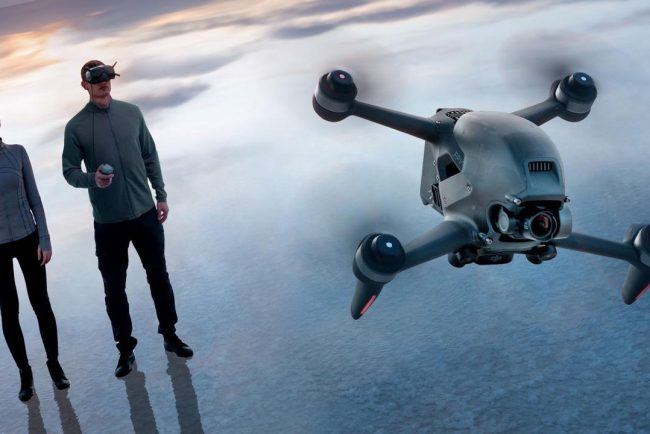
by admin
Soaring Towards the Future: The Impact of Drones on Retail, Cities, and Skies
As an internet information blogger, I am constantly amazed by the transformative power of technology. One innovation that has caught my attention in recent years is the rise of drones and their potential to revolutionize various aspects of our lives. From enhancing our retail experience […]
Industrial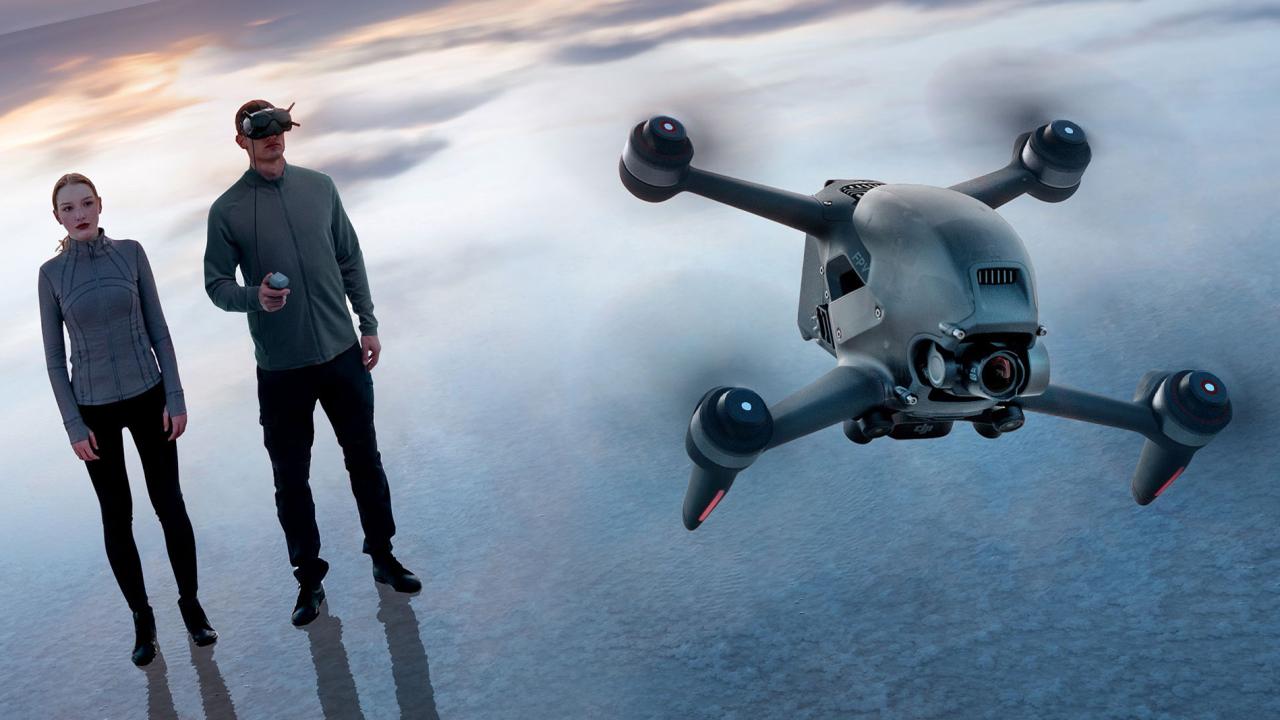
As an internet information blogger, I am constantly amazed by the transformative power of technology. One innovation that has caught my attention in recent years is the rise of drones and their potential to revolutionize various aspects of our lives. From enhancing our retail experience to reshaping our cities and skies, drones are poised to leave an indelible mark on the world as we know it.
Let’s begin with the retail sector. Traditional shopping experiences have undergone significant changes with the advent of e-commerce, but drones have the potential to take convenience and efficiency to new heights. Imagine a future where drones deliver packages right to our doorsteps, bypassing traffic congestion and reducing delivery times. Retail giants and startups alike are exploring the use of drones for last-mile deliveries, offering faster and more cost-effective solutions. This not only enhances the customer experience but also opens up opportunities for small businesses to reach a wider audience.
Beyond retail, drones have the potential to transform our cities. Urban planning and infrastructure maintenance can be challenging and time-consuming, but drones can provide invaluable assistance. Equipped with advanced imaging and data collection capabilities, drones can efficiently survey construction sites, monitor traffic patterns, and assess the condition of buildings and bridges. This real-time data enables city planners to make informed decisions and optimize resource allocation, leading to safer and more sustainable urban environments.
However, the impact of drones extends beyond terrestrial boundaries. They are set to revolutionize our skies as well. With advancements in autonomous flight and air traffic management systems, drones can be integrated into our airspace, enabling a wide range of applications. From aerial inspections and monitoring of agricultural lands to emergency response and search-and-rescue operations, drones offer a cost-effective and efficient alternative to conventional methods. However, it is essential to establish robust regulations and frameworks to ensure the safe integration of drones into our airspace.
As we embrace this drone-filled future, certain concerns naturally arise. Privacy and security, for instance, are paramount. Safeguarding personal data and preventing unauthorized drone access are critical considerations that require proactive measures and regulations. Striking a balance between innovation and responsible drone usage is crucial to ensure a harmonious coexistence with this technology.
In conclusion, drones are poised to revolutionize our retail experience, reshape our cities, and redefine our skies. Their potential to enhance convenience, efficiency, and safety is immense. As an internet information blogger, I am excited to witness the ongoing advancements in drone technology and share stories of their impact on our daily lives. By embracing the potential of drones and addressing the associated challenges, we can pave the way for a future where innovation and responsible drone usage go hand in hand.

by admin
Succeeding with a Lean Startup on a Shoestring Budget: Strategies for Success
Starting a business with limited funds can be challenging, but it’s not impossible. With the right approach and strategies, entrepreneurs can make their lean startups work even with minimal financial resources. In this article, we will explore effective ways to bootstrap your startup and achieve […]
Startups
Starting a business with limited funds can be challenging, but it’s not impossible. With the right approach and strategies, entrepreneurs can make their lean startups work even with minimal financial resources. In this article, we will explore effective ways to bootstrap your startup and achieve success on a tight budget.
- Embrace the Lean Startup Methodology:
The lean startup methodology focuses on minimizing waste and maximizing efficiency. It encourages entrepreneurs to test their ideas quickly and iterate based on feedback. By adopting this approach, you can save valuable time and money by avoiding unnecessary investments in product development or features that may not resonate with your target audience. Emphasize building a minimum viable product (MVP) that meets the core needs of your customers while keeping costs low.
- Leverage Free and Low-Cost Tools:
In today’s digital age, there is an abundance of free and low-cost tools available that can help startups thrive without breaking the bank. Utilize open-source software, such as content management systems or customer relationship management platforms, to build and manage your online presence. Take advantage of free marketing channels, such as social media platforms and email marketing, to reach and engage with your target audience. Additionally, explore affordable alternatives for essential services like web hosting, design, and accounting.
- Emphasize Bootstrapping and Resourcefulness:
Bootstrapping is the art of doing more with less. It requires entrepreneurs to be resourceful and creative in finding cost-effective solutions to meet their business needs. Instead of hiring expensive professionals, consider acquiring new skills yourself or seeking partnerships with freelancers or other startups who can provide services at a lower cost. Look for opportunities to collaborate and share resources with other entrepreneurs or businesses in your industry. By embracing a bootstrapping mindset, you can stretch your limited funds and make them go further.
- Focus on Customer Acquisition and Retention:
When resources are scarce, it becomes crucial to prioritize customer acquisition and retention. Instead of spending heavily on traditional marketing and advertising, focus on targeted strategies that can yield the best results. Utilize content marketing to establish your expertise and attract organic traffic to your website. Implement referral programs or loyalty initiatives to encourage your existing customers to become brand advocates and refer new customers. By maximizing the value you extract from each customer, you can generate sustainable revenue growth without a significant marketing budget.
- Seek Alternative Funding Sources:
While bootstrapping is an effective strategy, it’s essential to explore alternative funding sources to fuel your startup’s growth. Consider crowdfunding platforms, angel investors, or government grants that align with your business’s mission and vision. Pitch your startup to potential investors or participate in startup competitions that offer financial support. Additionally, explore partnerships or strategic alliances with established businesses that can provide access to resources or funding in exchange for mutual benefits.
Conclusion:
Building a lean startup with limited financial resources requires entrepreneurs to be strategic, resourceful, and adaptable. By embracing the lean startup methodology, leveraging free and low-cost tools, emphasizing bootstrapping and resourcefulness, focusing on customer acquisition and retention, and seeking alternative funding sources, entrepreneurs can make their lean startups thrive even on a shoestring budget. Remember, success is not solely determined by the amount of money invested but by the value you deliver to your customers and the effectiveness of your business strategies.

by admin
Exploring Strategies for Workforce Stability in the Tech Industry
The technology industry is known for its rapid pace of innovation and occasional fluctuations in demand, which can sometimes lead to workforce challenges. Rather than resorting to layoffs as a means of cost-cutting during lean periods, tech companies are increasingly seeking alternatives to maintain a […]
Industrial
The technology industry is known for its rapid pace of innovation and occasional fluctuations in demand, which can sometimes lead to workforce challenges. Rather than resorting to layoffs as a means of cost-cutting during lean periods, tech companies are increasingly seeking alternatives to maintain a stable workforce. By implementing creative strategies, companies can retain valuable talent, foster employee loyalty, and position themselves for long-term success. Let’s explore some of the alternatives to layoffs in the tech industry and their potential benefits.
- Retraining and Upskilling Programs: Instead of letting employees go, tech companies are investing in retraining and upskilling programs to align their workforce with emerging technologies and industry trends. By providing opportunities for employees to learn new skills and acquire knowledge in cutting-edge areas, companies can retain their talent pool while equipping them for future roles within the organization. These programs not only enhance employee engagement but also contribute to a more agile and adaptable workforce.
- Internal Mobility and Transfers: Rather than laying off employees, tech companies are exploring internal mobility and transfer options. This involves identifying areas within the organization where there is a demand for talent and offering employees the opportunity to transition to those roles. Internal mobility programs help companies retain experienced employees while enabling them to leverage their existing skills and knowledge in different capacities. It fosters a culture of continuous learning and growth within the organization.
- Reduced Work Hours and Flexible Schedules: Implementing reduced work hours or flexible schedules can be an effective alternative to layoffs. During periods of reduced demand, companies can offer employees the option to work fewer hours or have flexible schedules. This approach allows companies to retain their skilled workforce while optimizing productivity based on business needs. It also demonstrates a commitment to work-life balance and employee well-being, which can contribute to higher job satisfaction and retention rates.
- Voluntary Time-Off and Sabbaticals: In situations where a temporary reduction in workforce is necessary, tech companies can offer voluntary time-off or sabbaticals to employees. This allows individuals to take a break from work without the fear of losing their jobs. Employees can use this time for personal development, pursuing other interests, or taking extended vacations. Voluntary time-off programs not only provide employees with much-needed flexibility but also demonstrate the company’s commitment to supporting work-life integration.
- Project-Based Contracts and Freelance Opportunities: During periods of uncertainty, tech companies can explore project-based contracts and freelance opportunities to retain their workforce. By offering temporary assignments or freelance contracts, companies can maintain their talent pool while adjusting their workforce based on project requirements. This approach allows companies to access specialized skills when needed while providing employees with diverse and flexible work experiences.
By adopting these alternatives to layoffs, tech companies can mitigate the negative impact on employee morale, preserve institutional knowledge, and maintain a stable workforce. Moreover, these strategies position companies for future growth and enable them to respond quickly to market shifts.








